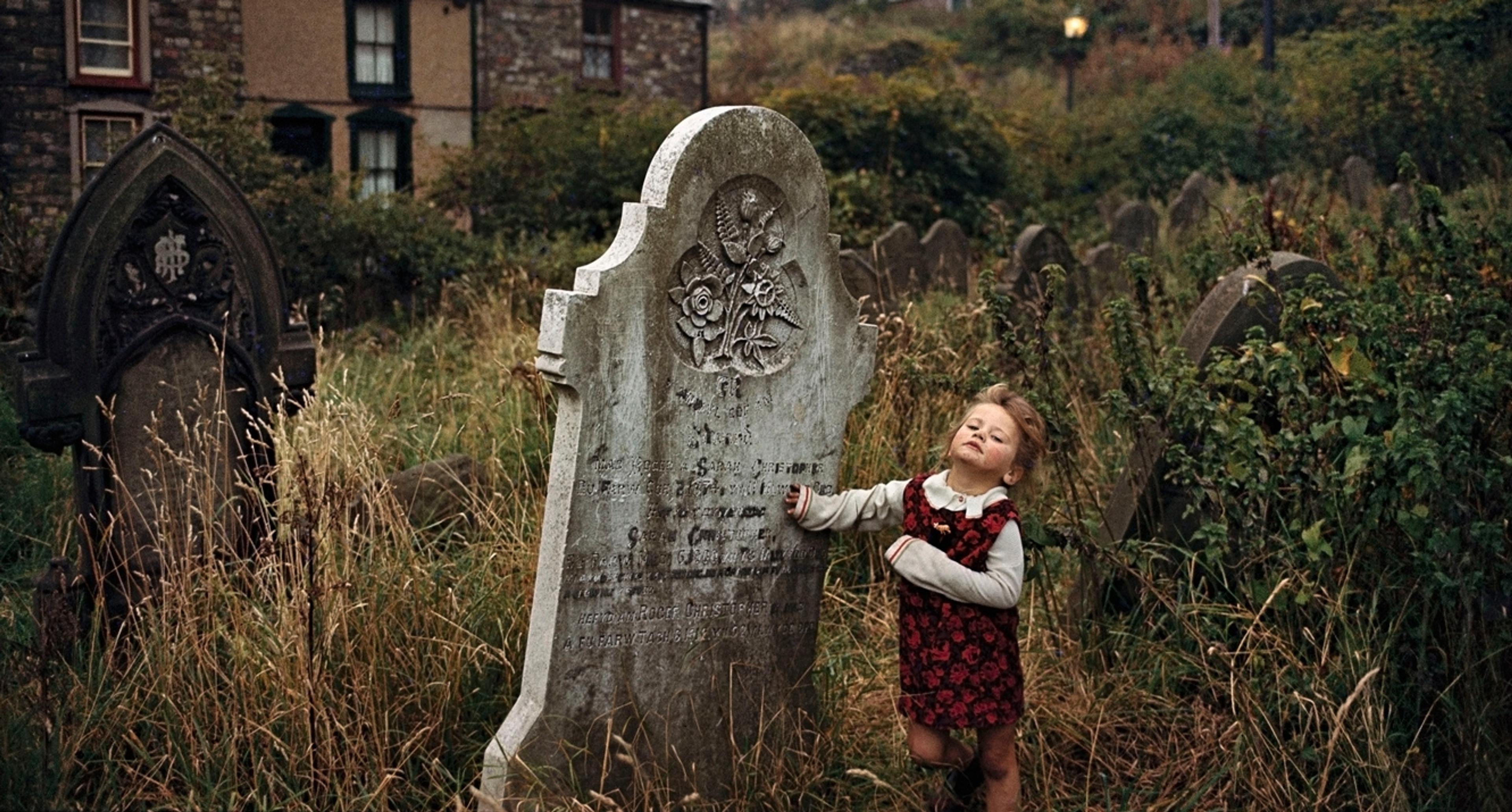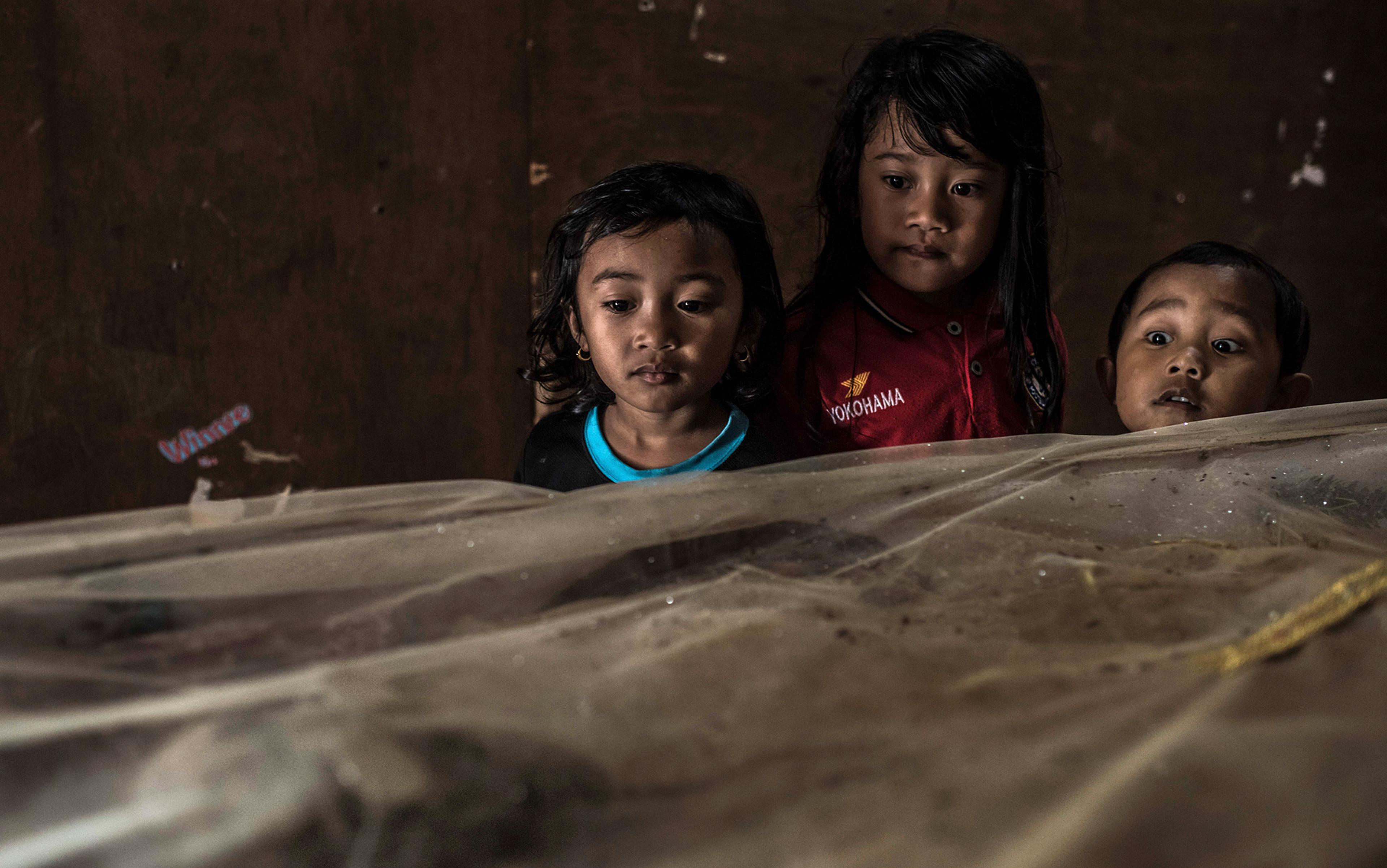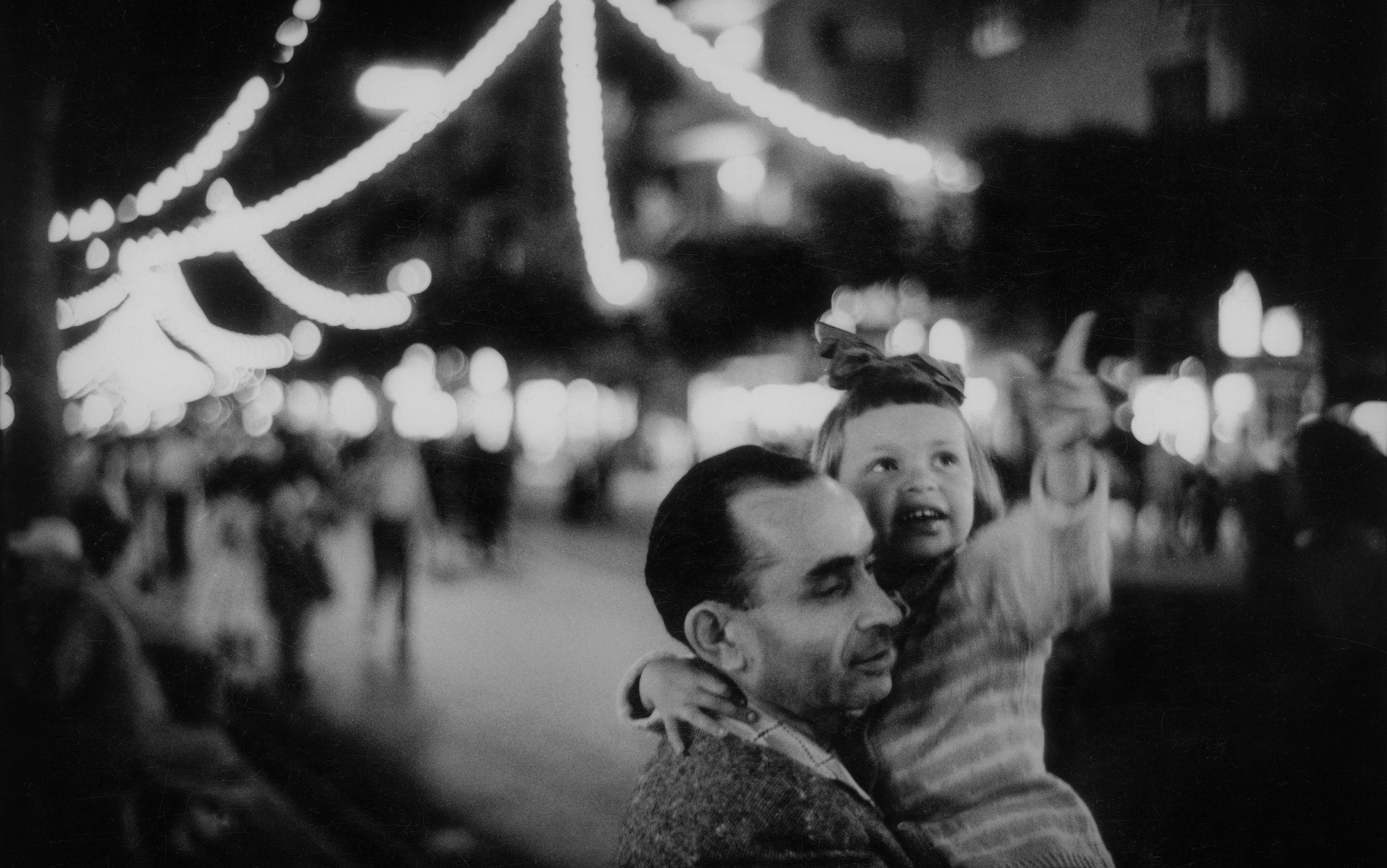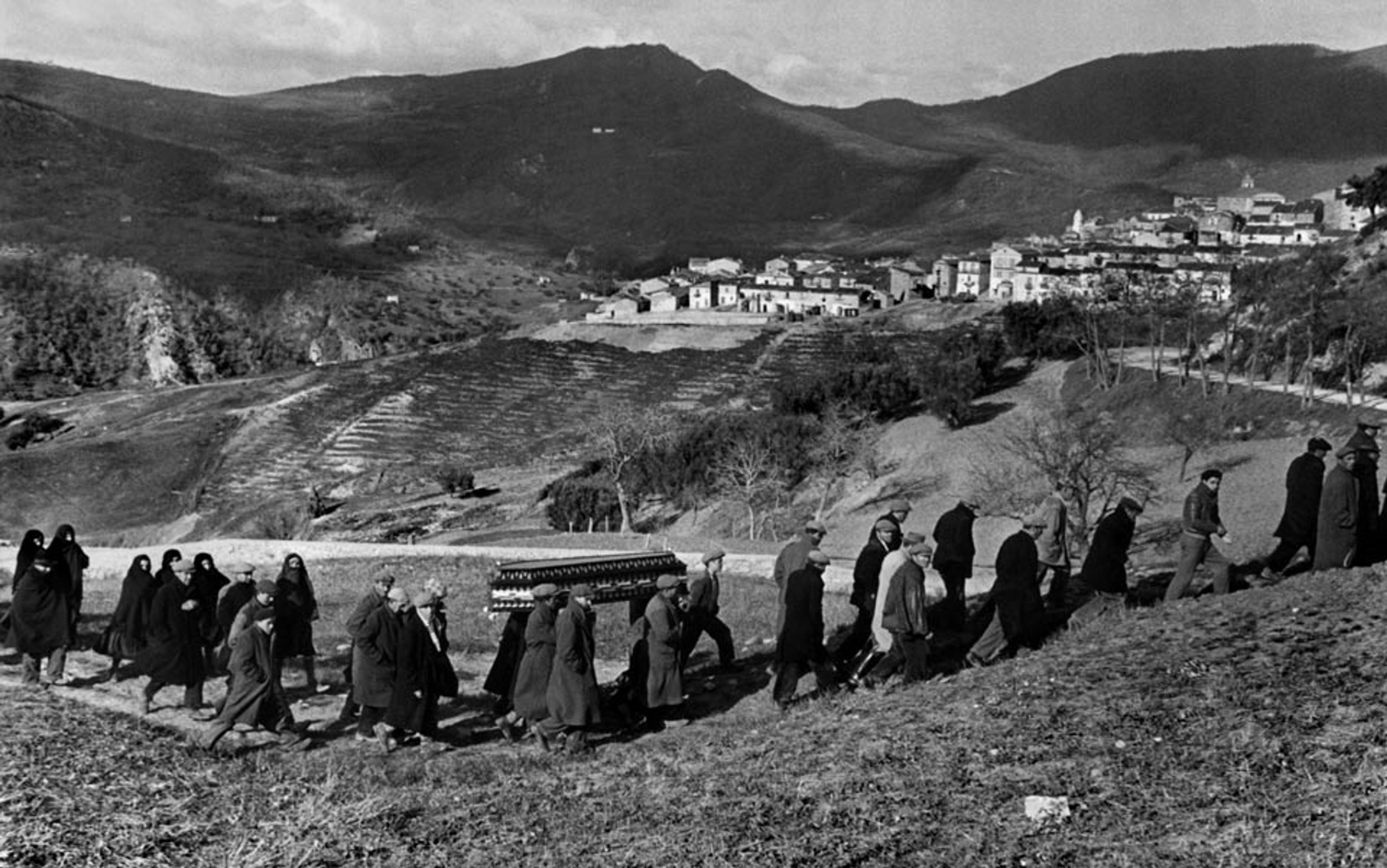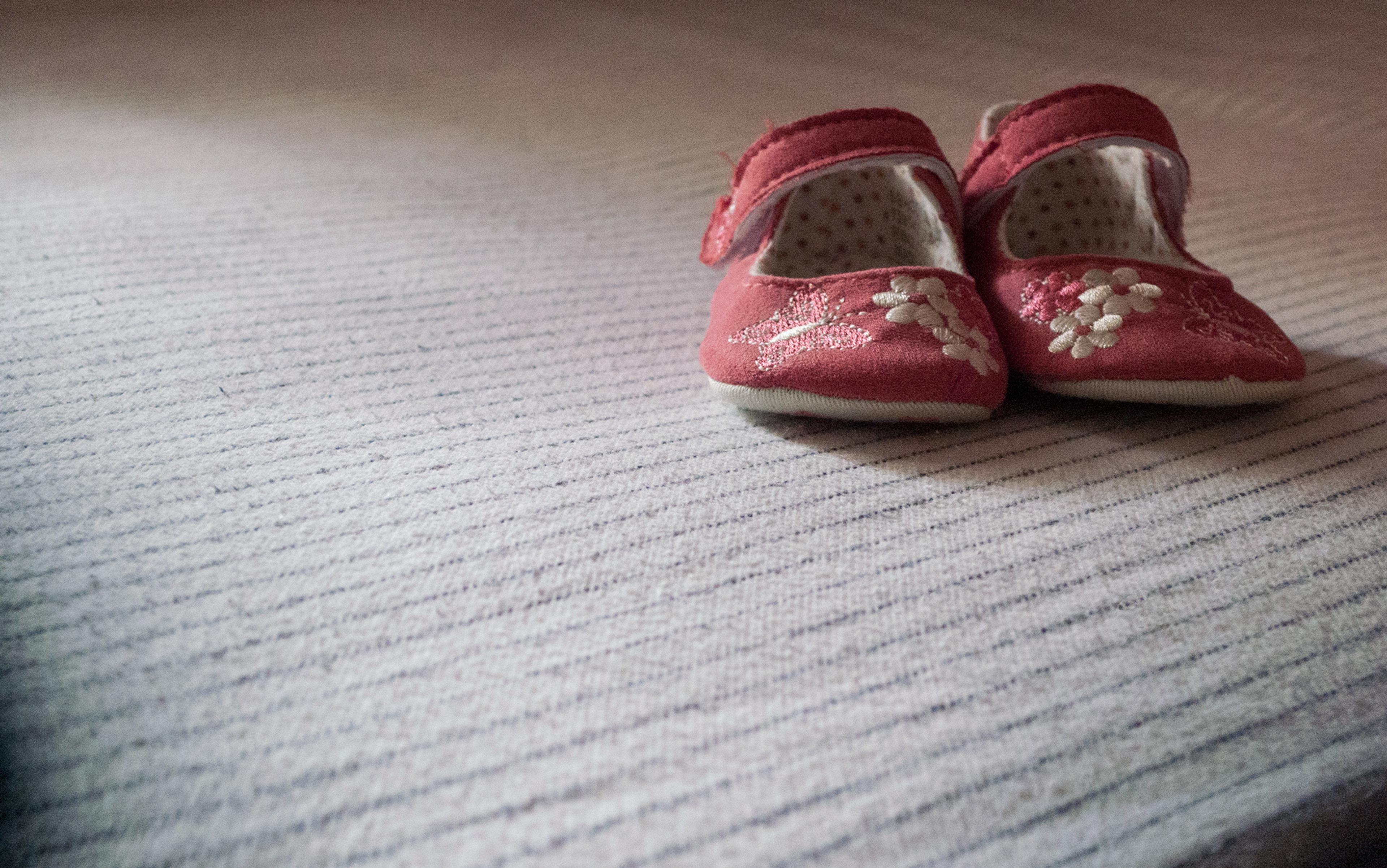I have a good arsenal of strategies to dip into when my five-year-old son tells me: ‘Dad, I don’t want to have a bath’ or ‘Dad, I don’t want to go to school’. In fact, it feels like the past few years have been a schooling in communications and sales strategy, for a particularly difficult customer. But when he told me recently: ‘Dad, I don’t want to die’, I found I didn’t have a pitch. I didn’t even have anything I wanted to sell.
I wish I did. I’d love to give him an answer that would completely quieten his anxiety, because, like most parents, I feel towards my child a duty of not only physical but also psychological care. My problem is this: I’m a card-carrying atheist, and I feel a competing sense of duty towards the truth. Two things that seem not just mutually exclusive but vigorously, irrepressibly, tomandjerrily antagonistic. Care versus Cruelty. Comfort versus Fact. Child versus Death.
I try to get him to talk, to see what exactly he thinks dying is, all the better to hear what he’s frightened of, and to see if some sly fudge might be made that neither denies the problem nor sells him a lie. Sensitive plant, he shrinks at the slightest prod, and won’t – or can’t – voice anything but vague apprehension. The mere idea is a place he doesn’t want to go. The one revealing hint comes in his off-hand question: ‘When you’re dead, can you still imagine things, like for dreaming?’ ‘Dead’ for him seems to be Little Red Riding Hood in the wolf’s belly, or Snow White in her glass coffin waiting to wake – not dead dead, just less alive than he is now, on account of something nasty. That’s the worst his imagination can come up with, apparently, and it’s an idea I’m inclined to let him play with, at least until I decide how best it ought to be corrected, if at all.
I consult friends – two trenches over, with kids of their own – to see what line they’ve sold about death, and how that went down. In every home, at every bedside, the children seem to have been told the same story: ‘it’ is something that will happen in a long, long time, in a strange land, far, far away. (I particularly liked my friend T’s line, telling his son that it’s not actually him, the little boy, who’s going to die, but a very wrinkly, crotchety old man with the same name.)
More practically, the consensus was that it helped to have someone very old to point to, as a tiny speck on a distant horizon. Look at grandma! Ninety-eight! The prospect was certainly tempting: considering how little reality ‘Six Years Old’ and ‘Next Christmas’, and even ‘After Dinner’ have for my son, that kind of deferral would sound like the promise of eternal life. Better yet, my friends said, if grandma is decrepit, and ill, and visibly suffering: then you can herd your child towards the conclusion that in such a state you’re actually glad to go. It’s old age presented as something repellent, which dying helps you escape or avoid.
It was exactly what I’d have counselled them if they’d rung me up. It was the spiel I’d been flogging myself all my adult life, with little or no effect, and in the end I didn’t even bother testing it on him. Beneath the materialist pragmatism, I knew myself to be living proof of Sigmund Freud’s belief that ‘in the unconscious every one of us is convinced of his own immortality’, and I was sure my son’s anxiety would be as deaf as my own to my friends’ sound, sane advice. It would be just another propaganda broadcast from the adult universe, of no more import than the one about why he should eat his greens.
That impression wasn’t contradicted when I looked at the science – in particular, the ‘roadmap’ of child cognitive development, as first formulated by Jean Piaget in the 1960s. By that school of thinking, for very young children the possibility of their own death simply does not exist. Even the death of a loved one – someone they’ve identified almost as part of themselves – is unacceptable, and their minds therefore treat it as a temporary absence, as if they’d just gone on holiday. Death as an undiscovered country, with charter flights.
The matter is more troubling as children come to recognise life and death as distinct states that can’t just be swapped back and forth. You’ll know that’s happening when your washable/eatable explanations come under scrutiny. You might, for instance, have been peddling the line that ‘it’s just like going to sleep’. Cue the stress-tests: ‘So you can dream?’; ‘So afterwards you wake up?’
That’s about where I am with my son now – at the start of a long, incremental process, the slow surrendering of ground to death. My fear – vertiginous, childish – is that even to engage with his questions will send him rushing headlong to a premature, terrorising realisation of his own mortality. Thankfully, while the science can’t give me any miracle answer, it nonetheless buys me time, with the reassurance that the process is something strictly sequential, largely mechanical, and not easily rushed.
The next concession is to ‘personify’ death – a stage I not only recognise but am complicit with, in the stories I tell (the Big Bad Wolf, the Wicked Witch), and in my tendency to characterise every ‘real’ death by its particularity rather than inevitability: through the unfortunate confluence of circumstances (grandma was old, it was winter, she caught cold) that might have been avoided. So coloured, death is something ‘bad’ inflicted from without, not something natural come to fruition from within.
‘They only ask about stuff they’re ready for: what they don’t like, they don’t hear’
All of which feeds into an idea of death as selective rather than universal, the result of flaw or fault or punishment. This understanding paves the way for another (arriving at around age eight or nine – still a lifetime away to him, and to me) in which the child’s own death is definitely possible, but perhaps avoidable, prompting ritualistic behaviour designed to ward off perceived threats. It’s the ‘don’t step on the cracks’ phase, easy to laugh at, but a firm commitment to cause-and-effect nonetheless. By that point there’s only one last stand to be made: the ‘heroic’ behaviour, or deliberate risk-taking, of adolescence. It’s Russian Roulette. Gambling as destiny. Never stick, always twist. But the risk is recognised as real – tacit acknowledgement that sooner or later they too will share the Destiny of all Living Things.
Overall, it’s a relief to know that my boy still has a lot to learn, when it comes to death. Cognitively, that it’s inevitable, unpredictable, irreversible, and – save the worst till last – universal. I’m glad to hear that these are all alien notions to his five-year-old’s universe, where magical thinking rules. It’s also a comfort to know that his is a trench warfare mentality, where each advance can be envisaged only from a secure and defendable position, meaning there’s little risk of him being catapulted towards the type of terror I’m so ready to imagine for him. As one friend says: ‘They only ask about stuff they’re ready for: what they don’t like, they don’t hear.’ Which makes me wonder if there’s really anything to be done but light the birthday candles and let nature beat its drum?
That’s the long road, cognitively, towards a realisation of the unpalatable truth – and in the brief appeal of a ‘non-interventionist’ policy on my part, I detect an echo of the ‘let him cry’ strategy I heard preached in the first months of his life. Back then, I could close his door, walk down the hall, then close my own. But what do I say here, now, to the little boy looking up at me with those slaughterhouse eyes, waiting to hear his father tell him something that will both convince and reassure?
Those who have worked with bereaved children (usually in the context of sibling or parent death) tend to operate within certain guidelines: regardless of religious belief, they avoid facilitating erroneous ideas about the biological framework of death. They avoid euphemism, (‘in heaven’, ‘at rest’) which is likely to be understood literally and generate confusion, even false hope. And they try always to consider the child’s current understanding of death, to which they attempt to tailor their explanations. A typical example: in Children and Death (1991), the grief counsellor Janna Excell recommends reciting the following explanatory script:
When someone dies, that means their body is no longer working. The heart stops beating, they no longer need to eat or sleep, and they no longer feel any pain. They don’t need their body any longer. That means we will never see them again as we could before.
She describes this explanation as simple, honest and factual, but with one small, enormous caveat: such an explanation will have to be repeated numerous times, perhaps over several years, because of the child’s inability or refusal to understand certain concepts implicit in it, such as death’s irreversibility. It’s the type of ‘explanation’ you encounter regularly when reading up on advice for children: something that expects the child to accept and assimilate what its own simplification implies they cannot understand. That’s not good enough for me. I’m holding out hope for something to match my boy’s own long process, each step of the way, rather than merely shouting back to him from the future and waiting for him to catch up.
Maybe my son doesn’t need to understand death in a single go. Maybe he just needs to take it out of its box and play with it
I’m beginning to believe that an ‘explanation’ (tailored or not) isn’t what’s needed at all. I even suspect it might be a mistake to try to ‘correct’ a child’s factually false or incoherent notions of death. Their function, it seems to me, is not to represent objective reality so much as to embody both the child’s fears and his struggle to integrate a threatening concept with what he already believes.
Cognitive psychology supports this: in pioneering research published in 1948, the Hungarian psychologist Maria Nagy found that three- to five‑year‑olds believed in the persistence of certain aspects of life even in death, albeit at a ‘reduced’ level, regarding the condition as akin to sleep, and as reversible. Such difficulty accepting the notion of ‘discontinuity’ implicit in death (confirmed by numerous subsequent studies) bolsters Nagy’s argument that children’s concrete concern at that age is in fact not death but (permanent) separation. Certain psychoanalysts, indeed, believe the child’s fear of dying is in fact a fear of feeling unloved, abandoned, or alone, and believe that threat is likely to trigger the defence mechanisms of denial and repression. Which makes me wonder if I shouldn’t temporarily accept whatever ideas my son comes up with that – as crutch or scaffolding – enable him to at least toy with the notion of his life as something other than unending.
In 1964, the paediatrician and child psychoanalyst Donald Winnicott described the mechanism (familiar to all parents) by which young children form and forsake attachments to objects (a teddy bear, say) first by identifying with and investing in the thing heavily, then naturally wearing it down – ceding it to the world, as it were – and eventually losing or abandoning it. Maybe my son doesn’t need to understand the idea of his own death in a single go. Maybe he just needs to be allowed to take it out of its box whenever he wants to play with it, first to participate in some happy fantasy, but with repeated handling becoming more and more like the grubby part of the world it actually is, and keep pulling at the thing until the seams split, the eyes pop, and finally the head comes off. It’s my hope that he’ll have a long, full life to achieve this slow surrender.
My role, then, might not necessarily be to confront my son with that ultimate truth, insisting on a simple, biological account of dying, nor to shield him from it for as long as I can by pointing to a distant horizon, or even letting him believe that there’s something beyond it. My role rather might be to hold his hand as he walks himself through the lies, giving him a sufficient sense of security to trade the better and bigger of them for ever smaller ones. I need to not think of this as a crisis crying out to be fixed right now – Now! – like a child’s tantrum. I need to remember that I have time on my side. The problem doesn’t need to be killed off, but allowed to live, in a better way. I don’t need to find an answer so much as a process I can trust.
The psychoanalyst Bruno Bettelheim claimed in the 1970s that a child who feels fear doesn’t need to be told his feeling is wrong, or that he should control it, and I don’t disagree; it sounds like typical generation-boxset good sense. When Bettelheim asserts that a child needs ‘permission to feel that what he experiences is justified by the situation he is in’, I grow curious as to how that might be done. And when he states that a child needs something that can ‘give body to his unconscious anxieties, and relieve them’ – and acknowledge their complexity and intensity, while making the perceived danger less overwhelming – I suspect this is what I’ve been looking for.
Bettelheim outlines the problem in The Uses of Enchantment (1976), where he proposes a clear, simple solution: stories. The best, for him, are those whose matter and method have been refined through centuries of oral tradition: fairy tales. If that seems a peculiarly tangential slant to take at the problem, it is, but deliberately so. Regarding a child’s ‘mortal anxiety’, Bettelheim admits that ‘More often than not, he is unable to express these feelings in words, or he can do so only by indirection: fear of the dark, of some animal, anxiety about his body…’ So, to simply roll out the facts as objective and incontrovertible goes against that grain, leading the child into a direct confrontation with his anxieties, ready or not, with ‘pernicious consequences at the moment and in the future’. The great advantage of fairy tales is precisely their indirection – their symbolic method – which allows the child to take the narratives at face value, or to feel a resonance with his own experience.
Parents, too, need a means to engage with those common fears, and the reading of stories is a perfect opportunity
At one point in the child’s development, as I’ve seen, he will feel death as the prospect of abandonment or separation. At another age (or moment, or story), death appears to the child as a final, horrible punishment – and not as threat but as reassurance, as the restoration of order, where evil (Hansel and Gretel’s witch, say) is eliminated from the hero’s world, making his permanent happiness possible. Another story again will seem to equate death with failure, but – reassuringly – not as finality:
Not just in Little Red Cap but throughout the fairy-tale literature, death of the hero – different from death from old age, after life’s fulfilment – symbolises his failure. Death of the unsuccessful – such as those who tried to get to Sleeping Beauty before the time was ripe, and perished in the thorns – symbolises this person was not mature enough to master the demanding task which he foolishly (prematurely) undertook.
Such rich ‘functionality’ appeals to my appreciation of my son’s inner life, how I think his mind works, emotionally and imaginatively.
But equally appealing is what Bettelheim said about me. Often, he said, the parent no more likes what certain signs of anxiety point to than the child does, so in his own selfish interest he dismisses or ignores them. That parent, too, needs a means to engage with those common fears, and the reading of stories is a perfect opportunity. In fact, Bettelheim encourages the parent to improvise within the framework of any given story; the new version will reveal both the reader’s own fears and his apprehension of his child’s anxieties – making the storytelling a moment of admission, permission and mutual affiliation.
In that moment, the child hears the voice of someone who’s lived in his world, who remembers how it was and how it felt. Someone who takes his ‘existential anxieties and dilemmas very seriously and addresses [him]self directly to them: the need to be loved and the fear that one is thought worthless; the love of life, and the fear of death’. It’s the voice of someone who’s lived in that world and survived, and who in these stories tells how, in terms the child can understand. It sounds like a part I’d like to play for my son.
